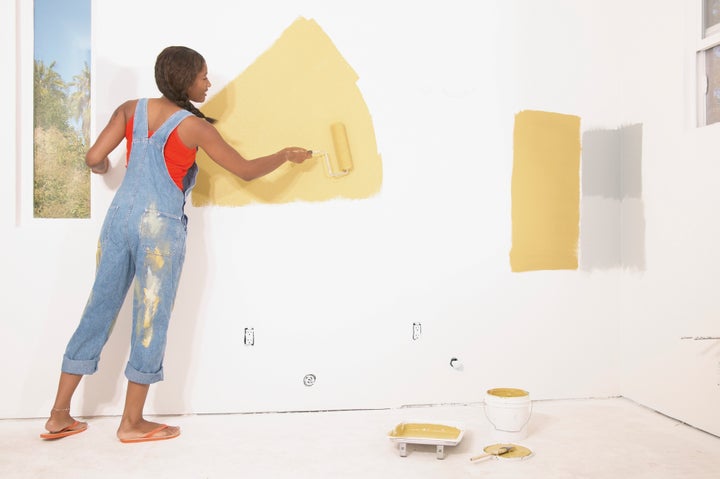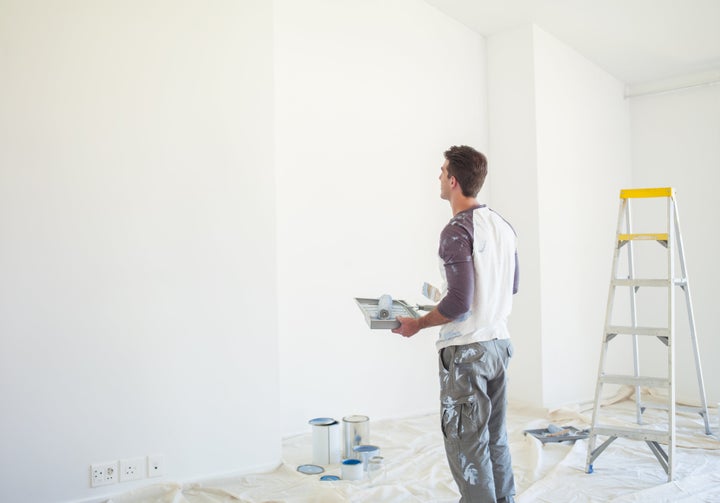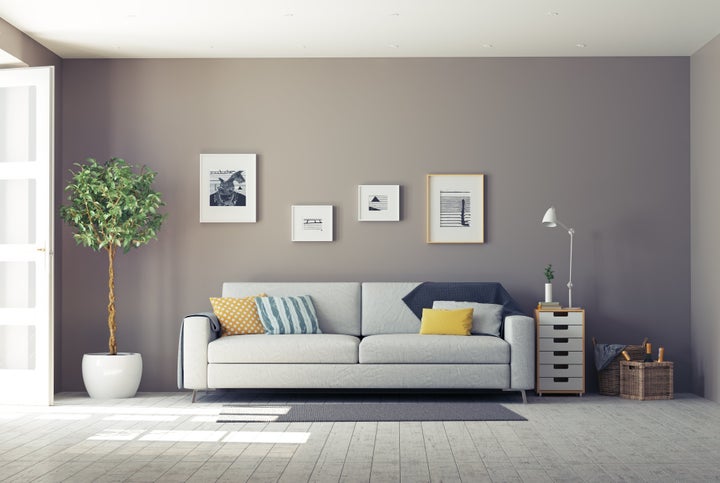While organizing your closet and tricking out your bed can certainly lift your spirits, there's one thing that can majorly impact your mood that you probably haven't thought much about. Believe it or not, the paint colors you choose can change the way you feel in your home.
Psychologists, color theorists and interior designers alike emphasize the power coloration has on the tone of our surroundings, so it's about time we pay more attention to what we put on our walls. Whether you're starting from scratch or simply looking to repaint a small nook, take a few cues from the expert tips below.
The Science Behind Color And Mood
According to Sally Augustin, environmental psychologist and principal at Design With Science, colors trigger emotional responses depending on their saturation and intensity. "Colors that are less saturated but relatively bright, such as a sage green with lots of white in it, are relaxing to look at," Augustin notes. "Colors that are more saturated but less bright, such as Kelly green, are energizing to see," and therefore less calming.
Augustin also points out that specific shades have been linked to certain behaviors. "Seeing the color red has been linked to impaired analytical performance," for example, and warm tones like yellow and orange, "stimulate appetite." These findings suggest our environment has way more impact on our minds than we think.
![Cultural associations also factor into how we process certain hues. "In [the West] blue is linked with restfulness," Augustin says, "so it is a great color for a bedroom, particularly if used in a less saturated but relatively bright shade."](https://img.huffingtonpost.com/asset/56a8f1bc2a00002c000315fb.jpeg?ops=scalefit_720_noupscale)
How To Approach Color In Your Home
Science aside, choosing the right paint for your home should be based on your personal reaction to color. Sue Wadden, director of color marketing at Sherwin-Williams, recommends doing a little emotional exploring before committing to a certain color scheme. "Mood is a good place to start," she says, as it can help you "navigate color families to find the right choice."

Erika Woelfel, director of color at Behr, advocates a similar approach: "Take a peak at your closet and see what you wear the most – this can be a great indicator of which colors make you feel your best."
What To Consider Before You Paint
Although following your heart is a big part of color selection, there are a few concrete things to keep in mind when it comes time to settle on hues for your home.

For one, it's important to avoid randomness. According to Wadden, the key here is to build a "color story," or a consistent color scheme you reference around the home.
Woelfel has boiled this process down to a science. "The easiest way to build a color palette that inspires your own happiness is to choose one color to use on the majority of your space, and then pick two complimentary hues—one warm, one cool-toned—to pair with it," she advises.
Secondly, know the difference between warm and cool tones. As a good rule of thumb, cool tones, like blues and greens, induce relaxation, while warm tones, like reds and yellows, make a space feel more cheerful and vibrant.

Lastly, a good color story also pulls in what's outside of the home. Wadden recommends choosing shades that complement the "color temperature" of your home's surroundings. If you live in a warm, sunny climate, cool, soothing tones like neutrals and soft blues will balance the richness of the outdoors. Those who live in cloudy environments should consider decorating with warm tones that make you feel more spirited while inside.
In any case, make sure the colors you choose make your space the sanctuary you deserve to come home to day in and day out.
Also on HuffPost: